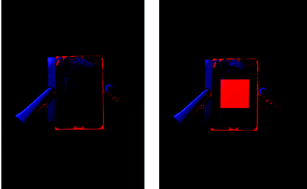Highly dichroic benzo-2,1,3-thiadiazoledyes containing five linearly π-conjugated aromatic residues, with fluorescent emission ranging from green to red, in a liquid crystal guest–host system†
Abstract
A number of fluorescent

* Corresponding authors
a
Institute for Materials Chemistry and Engineering, Kyushu University, 6-1 Kasuga-koh-en, Kasuga-shi, Fukuoka, Japan
E-mail:
mataka@cm.kyushu-u.ac.jp
Fax: +81-92-583-7894
b Department of Molecular and Material Sciences, Graduate School of Engineering Sciences, Kyushu University, 6-1 Kasuga-koh-en, Kasuga-shi, Fukuoka, Japan
c Department of Electrical and Electronic Engineering, Akita University, 1-1 Tegata Gakuencho, Akita-shi, Akita, Japan
d Mitsubishi Chemical Group Science and Technology Research Center, Inc., 1000 Kamoshida, Aoba-ku, Yokohama-shi, Kanagawa, Japan
A number of fluorescent

 Please wait while we load your content...
Something went wrong. Try again?
Please wait while we load your content...
Something went wrong. Try again?
X. Zhang, R. Yamaguchi, K. Moriyama, M. Kadowaki, T. Kobayashi, T. Ishi-i, T. Thiemann and S. Mataka, J. Mater. Chem., 2006, 16, 736 DOI: 10.1039/B512493J
To request permission to reproduce material from this article, please go to the Copyright Clearance Center request page.
If you are an author contributing to an RSC publication, you do not need to request permission provided correct acknowledgement is given.
If you are the author of this article, you do not need to request permission to reproduce figures and diagrams provided correct acknowledgement is given. If you want to reproduce the whole article in a third-party publication (excluding your thesis/dissertation for which permission is not required) please go to the Copyright Clearance Center request page.
Read more about how to correctly acknowledge RSC content.
 Fetching data from CrossRef.
Fetching data from CrossRef.
This may take some time to load.
Loading related content
